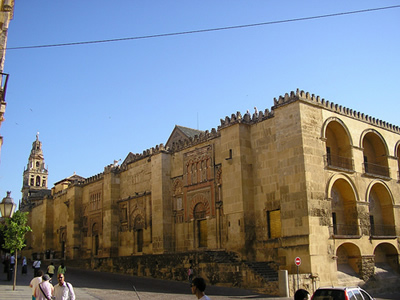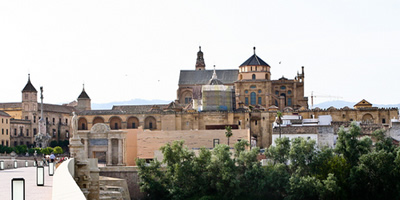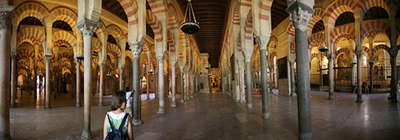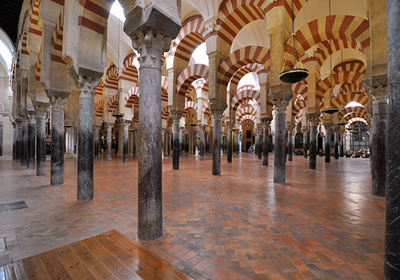One of the most impressive monuments you can visit in Spain is, without doubt, the Mosque of Cordoba. However, in the ranking of museums and monuments in Spain, by the number of visitors they receive each year, the Mosque of Cordoba just entered the top 10. And in your travels to Andalusia sure you’ve visited Seville and Granada, but perhaps you have not stopped in Cordoba to visit the mosque.
Photography by Nigel’s Europe
I assure you on a journey through southern Spain, the Mosque of Cordoba should be a must-see, as you will be impressed by the sheer beauty of this temple that was the best example of Moorish art in Spain, and the largest mosque in the West.
History of his legacy:
The Mosque of Cordoba was built between 786 and 988, in stages, and became the best example of the strength of the Umayyad Caliphate of Cordoba.
The mosque was begun on the site of a former Visigothic church, the church of San Vicente, which in your visit to the mosque can still see some ruins.
Abederraman I was the founder of the mosque, which in its first phase was eleven longitudinal aisles that ended in the wall of the qibla, which already had a spectacular forest of columns, image historically associated with the Mosque of Cordoba.
Photography by *clairity*
Decorative arches in the Great Mosque of Cordoba in Spain:
It should be noted that the qibla, facing the river Guadalquivir, not looking to Mecca, as is customary in Muslim mosques, and which no one knows the reason.
Photography by bongo vongo
This original mosque was followed by three additions made by Abderrahman II, Al Hakam II and Mansur. In the first and second, the temple is spreading towards river. It is in this second extension when building the area of greatest architectural beauty of the Mosque, which occupies the beautiful macsura and the mihrab, with a splendid decoration.
The third extension of Mansur is the largest area and this time it had to build new ships strips on the south side. Thus, the Mosque of Cordoba grew to capacity for up to 30,000 parishioners, up from 7,500 of the original mosque.
Photography by pedrik
Bell Tower of the Mosque: Catedral de Córdoba:
Later, after the entry of King Ferdinand III in Cordoba in 1236, the Mosque of Cordoba was consecrated as Cathedral of Cordoba. Thereafter, the Muslim monument began a transformation to become a Christian cathedral.
The first performance took place in 1266, when he built a Gothic nave and chancel, which is now known as the Capilla de Villaviciosa, and that did not involve a significant deterioration of the original structure of the Muslim shrine.
However, the most important reform carried out in the Mosque of Cordoba, and also the most controversial, took place in the sixteenth century, when ecclesiastical authorities proposed building in the center of a Muslim shrine and a new cruise Altar Renaissance style.
Heritage:
Finally, the intervention had to be approved by King Charles I, who after visiting the Mosque of Cordoba after the completion of the works, expressed his disapproval of the dramatic deterioration of the original monument of the mosque.
This debate in a way still to this day continues with the double aspect of the temple and mosque-cathedral. But integration is what has led to the conservation of the mosque, compared to what happened to other ancient mosques, such as Seville, which was demolished and replaced directly by a new Christian cathedral.
The construction of the Renaissance basilica, with its large central dome, was extended for nearly a century until 1600. Subsequently, in 1757, he joined the spectacular choir stalls, Baroque.
The Mosque of Cordoba in 1984 was declared World Heritage by UNESCO.
Today, on your visit to the Mosque of Cordoba, you can see its outer walls with different gates as the main, known as the Door of Forgiveness, the most beautiful or Muslim origin, the gates of Al Hakam II .
Through them you access to the beautiful Patio de los Naranjos. And within the temple, you can enjoy the famous forest of columns, in its various extensions, in the stunning architecture of the macsura and the mihrab, the Gothic nave and the transept and the basilica altar Renaissance.
The Mosque of Cordoba, a World Heritage Site that lasts over time!
Leave a Reply
You must be logged in to post a comment.




Recent Comments